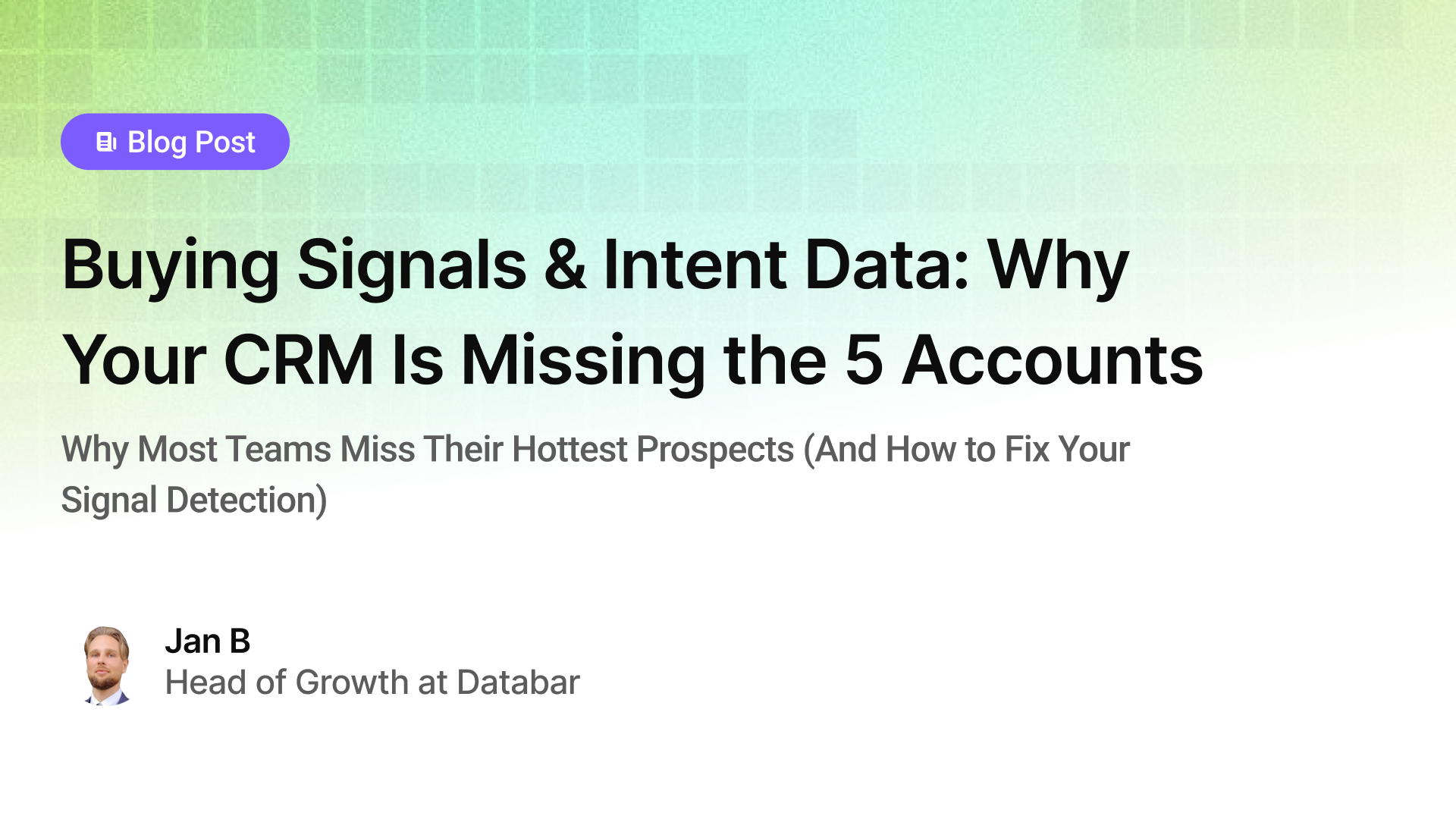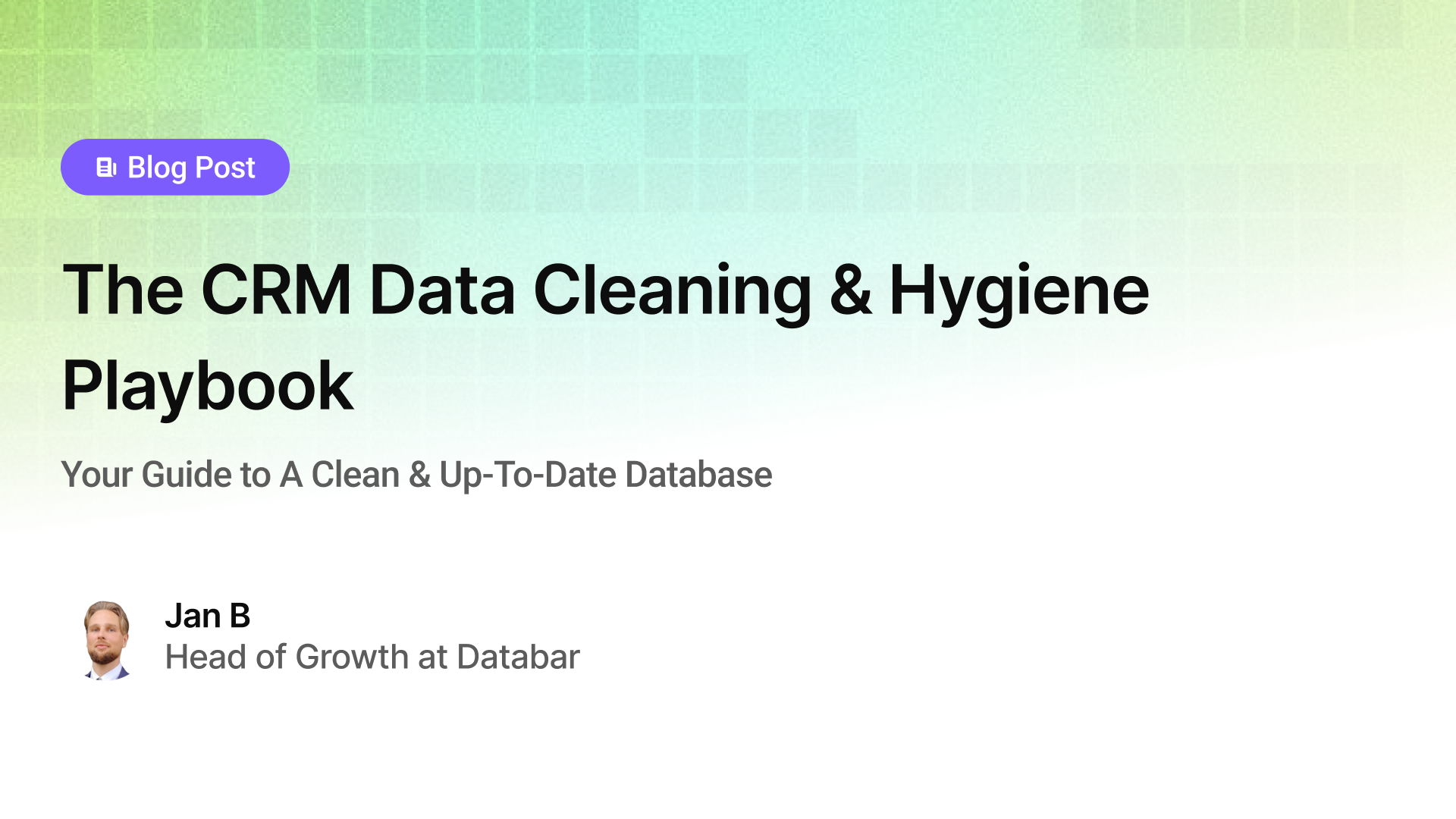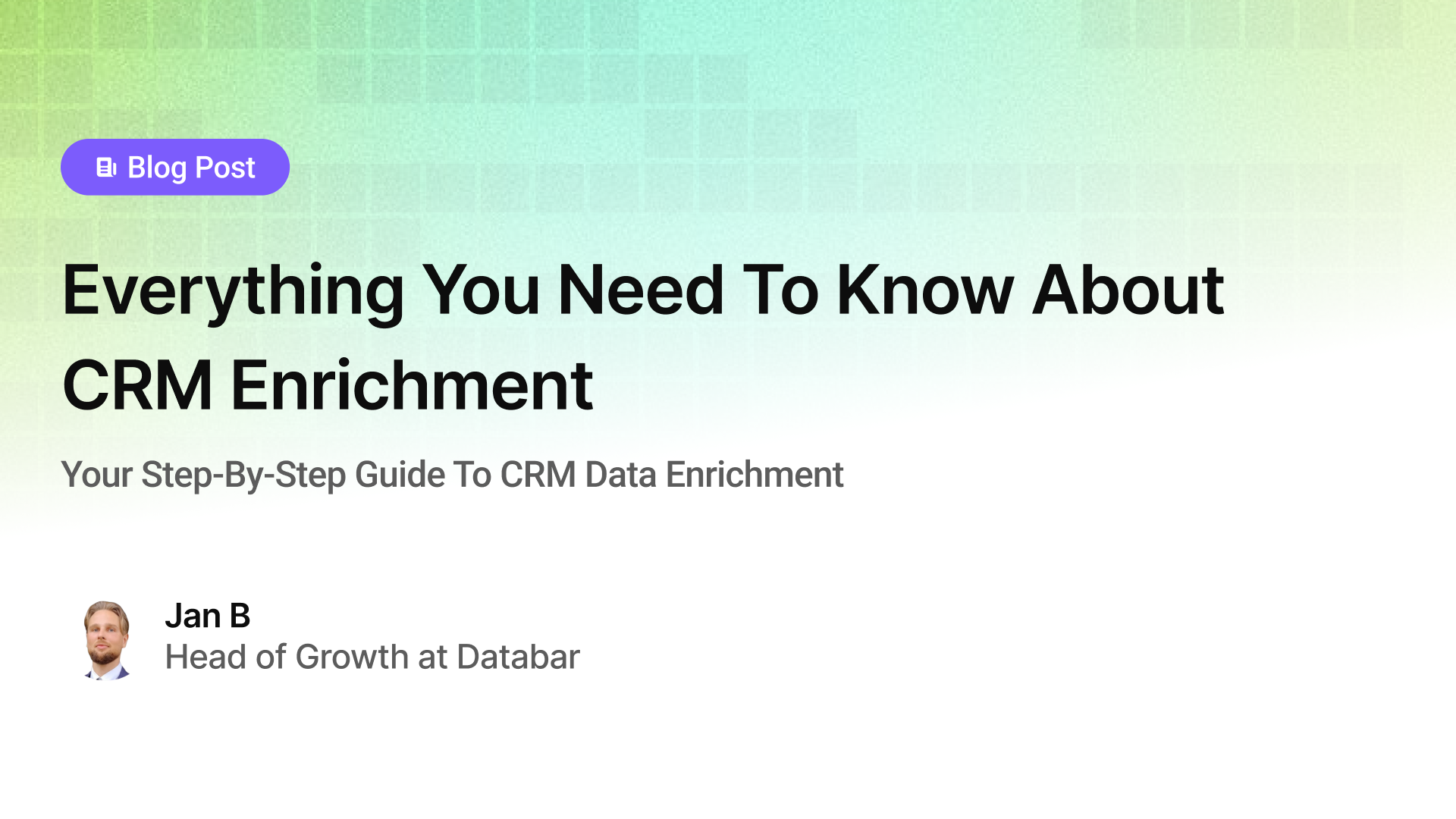Email Domain Warm Up: The Complete Guide for Maximum Deliverability in 2025
Proven strategies to warm up new email domains properly and build sender reputation
Blogby JanMay 20, 2025

Picture this scenario: Your sales team has prepped the perfect cold email sequence targeting high-value prospects. You've researched your audience, crafted compelling messages, and set up a new dedicated sending domain. You launch your campaign with high expectations—but instead of responses, you get silence.
The analytics tell the painful story: most of your carefully crafted messages never reached the inbox. They're sitting in spam folders or, worse, were blocked entirely.
The culprit? Insufficient email domain warm up for cold outreach.
Research from cold email specialists shows that new, unwarmed domains used for cold outreach average below 30% inbox placement rates in their first month—meaning 7 out of 10 messages never reach their targets. Without proper warming, even the most strategic cold email campaigns are doomed before they begin.
This comprehensive guide will walk you through a systematic approach to email domain warm up specifically designed for cold outreach campaigns, helping you establish the sender reputation needed to reach your prospects' primary inboxes.
Why Cold Email Domains Require Special Warming Protocols
When you launch a new domain for cold outreach, you face unique deliverability challenges that go beyond standard email marketing concerns.
Cold Outreach: Starting with Two Strikes Against You
Major email providers are particularly vigilant about cold email behaviors. When using a new domain for cold outreach, you're essentially combining two high-risk factors in email deliverability:
- New domain status: No sending history or established reputation
- Cold outreach patterns: Sending to recipients who haven't previously engaged with you
This combination creates heightened scrutiny from spam filtering systems. Without proper warming, cold outreach from new domains often faces:
- Almost immediate filtering to spam folders
- Aggressive throttling (artificially slowed delivery)
- Complete blocking with no delivery and no bounce notification
- Permanent reputation damage that can affect the domain for months
According to cold email specialists, unwarmed domains used for cold outreach experience inbox placement rates 40-60% lower than properly warmed domains sending identical content.
Why Cold Email Requires Specialized Warming Protocols
Traditional email warm up advice often focuses on marketing campaigns to existing contacts—a fundamentally different scenario from cold outreach. Cold email warm up requires specialized strategies because:
You lack existing engaged recipients: Standard warm up relies heavily on sending to already-engaged contacts. In cold outreach, you don't have this luxury.
You face stricter filtering: Emails to recipients who haven't previously engaged with your domain trigger additional scrutiny from filtering systems.
Your sending patterns differ: Cold outreach typically involves methodical, personalized sequences rather than bulk sends, requiring different warming approaches.
These differences explain why general email warm up advice often fails for cold outreach domains, and why specialized protocols are essential.
The Science Behind Cold Email Sender Reputation
Mailbox providers evaluate email sender reputation for cold outreach based on specific signals:
Cold Email Reputation Factors
Several factors specifically impact cold email deliverability:
Initial recipient response: The first action recipients take with your emails (open, delete without reading, mark as spam) heavily influences future deliverability to both that recipient and others at the same domain.
Reply rates: Replies signal legitimacy and represent the single most powerful positive reputation signal for cold email domains. Even a small percentage of replies can dramatically improve overall deliverability.
Spam complaint rate: Cold outreach naturally generates more complaints than emails to opted-in lists. Even a 0.1% complaint rate can trigger filtering for new domains.
Domain consistency: Sending from new domains that don't match your website or that lack proper business presence online raises immediate suspicion.
These factors create a challenging dynamic for cold outreach, where initial reputation development requires careful management to avoid triggering negative signals.
How Filtering Systems Target Cold Email
Email systems have evolved sophisticated methods to identify and filter cold outreach:
Pattern recognition identifies typical cold email behaviors, such as sending single emails to many different domains rather than multiple messages to a single domain.
Content analysis detects sales language, cold outreach formulas, and other indicators of unsolicited messages.
Engagement monitoring tracks whether recipients interact with messages or ignore them, with consistent non-engagement triggering filtering.
Volume and consistency evaluation looks for suspicious sending patterns that typify cold outreach operations.
These targeting mechanisms explain why cold outreach domains require specialized warming strategies focused on appearing legitimate from the very first message.
The Strategic Cold Email Domain Warm Up Process
Successfully warming a domain for cold outreach requires a systematic approach spanning 2-4 weeks:
Phase 1: Technical Foundation and Preparation (Before Sending)
Before sending your first cold email, establish the proper foundation:
-
Comprehensive domain setup
- Create a dedicated domain for cold outreach (or subdomain of your main domain)
- Establish a legitimate web presence on this domain
- Implement complete SPF, DKIM, and DMARC authentication
- Ensure proper DNS configuration including reverse DNS
-
Monitoring infrastructure
- Create seed accounts across major mailbox providers
- (Set up tracking for key deliverability metrics)
- (Implement email tracking that doesn't rely solely on open pixels)
-
Warm up strategy development
- Determine your ultimate volume goals (emails per day)
- Create a gradual scaling plan across 2-4 weeks
- Prepare content specifically designed for the warm up process
- Identify initial friendly contacts for the first phase
This foundation work prevents technical issues from undermining your reputation building efforts.
Phase 2: Initial Warming With Friendly Contacts
Begin with extremely controlled sending to establish baseline reputation:
-
Start with minimal friendly volume
- Send to only 5-10 recipients daily for the first 3-5 days
- Target only personal contacts who will definitely engage positively
- Request explicit replies to help establish reputation
- Send at consistent times each day to establish patterns
-
Content optimization
- Use plain-text or minimal HTML formatting
- Create personal, conversational messages
- Avoid any sales language or promotional content
- Include content specifically designed to generate replies
-
Engagement analysis
- Confirm inbox placement across seed accounts
- Track reply rates and other engagement metrics
- Analyze delivery timing for signs of throttling
- Make adjustments based on initial performance
During this phase, focus entirely on establishing positive engagement patterns before introducing any cold contacts.
Phase 3: Introducing Cold Recipients
Carefully integrate initial cold outreach while maintaining strong overall engagement:
-
Gradual cold introduction
- Begin with just 5-10 cold contacts daily
- Continue sending to friendly contacts to maintain engagement ratios
- Gradually increase cold percentage while maintaining 20%+ overall reply rates
- Send at consistent times to establish predictable patterns
-
Cold content optimization
- Use highly personalized messages for cold contacts
- Focus on genuine value rather than sales pitches
- Craft subject lines to maximize open rates
- Include specific triggers for replies
-
Reputation monitoring
- Closely track inbox placement across different receiving domains
- Monitor for any signs of filtering or blocking
- Check sending speed for indicators of throttling
- Analyze engagement patterns across recipient types
During this phase, any signs of deliverability issues should trigger an immediate return to friendly-only sending until performance improves.
Phase 4: Scaling to Full Capacity
Methodically increase volume while maintaining strong engagement metrics:
-
Volume expansion
- Increase daily cold outreach by 10-15% increments
- Maintain at least 5% overall reply rates
- Adjust pacing based on deliverability performance
- Eventually phase out friendly sends as cold performance stabilizes
-
Content diversification
- Gradually introduce your standard cold email sequences
- Test different messaging approaches
- Maintain high personalization standards
- Continuously optimize based on response data
-
Full monitoring implementation
- Establish ongoing deliverability tracking systems
- Create alert protocols for reputation issues
- Implement regular testing and validation
- Set up formal process for handling spam complaints
By the end of this phase, you should have established a sender reputation capable of supporting your full cold outreach program with strong inbox placement rates.
Advanced Cold Email Warm Up Strategies
Beyond the basic framework, several specialized techniques can enhance cold email warm up effectiveness:
Leveraging Automated Warm Up Tools for Cold Outreach
Specialized services can supplement your organic warm up efforts:
How they work for cold outreach: These tools create networks of real mailboxes that exchange messages with your domain, automatically generating opens, replies, and other positive signals that help establish initial reputation.
Implementation for cold domains: For cold outreach domains, automated tools should run concurrently with your organic warm up process, creating a baseline of positive engagement that helps buffer the potentially negative signals from initial cold contacts.
Popular options integrated with Databar include Instantly, Reply.io, Smartlead, and Salesforge, which provide automated warm up capabilities specifically designed for cold outreach domains.
The Multi-Domain Strategy for Cold Outreach
Strategic use of multiple domains can enhance deliverability for sophisticated cold outreach programs:
Domain segmentation: Utilize separate domains for different industries, prospect types, or outreach purposes to isolate reputation and limit potential damage from any single campaign.
Staggered warming: Implement rolling warm up schedules across domains to ensure continuity of outreach even if individual domains experience deliverability challenges.
Risk distribution: Spread high-risk outreach (such as to enterprise domains with strict filtering) across multiple domains to limit potential negative impact.
While requiring more management, this multi-domain approach provides significant risk mitigation for large-scale cold outreach operations.
Engagement Optimization for Cold Outreach Warming
Maximize positive signals during the critical warm up period:
Personalization depth: During warm up, invest in deeper personalization than you might normally use, significantly increasing the likelihood of recipient engagement.
Strategic targeting: Begin cold outreach with industries and job functions that historically have higher engagement rates, saving tougher segments for after establishing reputation.
Reply generation: Craft messages specifically designed to elicit responses, such as asking relevant questions or requesting specific input related to the recipient's expertise.
These engagement-focused approaches create the positive interaction patterns that accelerate reputation development for cold outreach domains.
Common Cold Email Warm Up Pitfalls
Several specific mistakes commonly undermine cold email warm up efforts:
Skipping the Friendly Phase
The problem: Many cold outreachers skip the initial friendly contacts phase, immediately sending only to cold prospects and creating negative engagement patterns.
The solution: Always begin with a 1-2 week period of sending exclusively to contacts who will definitely engage positively, establishing baseline reputation before introducing any cold recipients.
Excessive Personalization Tokens
The problem: During warm up, many use too many automated personalization tokens or variables, creating technical deliverability risks if any variables fail to populate correctly.
The solution: During the warm up period, limit personalization to manually verified elements, moving to more sophisticated dynamic content only after establishing solid reputation.
Immediate Sales Language
The problem: Using direct sales language, calls-to-action, and promotional content in early warm up messages triggers content-based filtering that damages developing reputation.
The solution: Begin with conversational, value-focused messaging without explicit sales language, gradually introducing more direct approaches as reputation establishes.
Ignoring Reply Rates
The problem: Many focus exclusively on open rates during warm up, missing the critical importance of replies for cold email reputation development.
The solution: Prioritize reply generation above all other metrics during warm up, even if it means sending to fewer recipients or using less scalable outreach approaches initially.
By avoiding these common pitfalls, you can ensure your cold email warm up efforts translate into sustained deliverability success.
Measuring Cold Email Warm Up Success
To evaluate your email warm up process for cold outreach, monitor these essential metrics:
Primary Cold Email Deliverability Indicators
Inbox placement rate: What percentage of your emails reach the primary inbox? Track this through seed accounts at major providers (Gmail, Outlook, Yahoo).
Spam folder placement: Monitor how many messages land in spam rather than being blocked entirely, as this provides insight into your current reputation status.
Sending speed: Throttling (delayed delivery) often provides the earliest warning of reputation issues for cold email domains.
Critical Cold Outreach Engagement Metrics
Reply rate: The most important metric for cold email domains—aim for at least 5% during warm up.
Spam complaint rate: For cold outreach, keep this below 0.1% during warm up, as complaints have outsized impact on new domain reputation.
Negative engagement: Track deletion without reading or consistent non-engagement, as these passive negative signals significantly impact cold email reputation.
By focusing on these metrics throughout your warm up process, you can identify potential issues early and adjust your approach to maximize long-term deliverability.
The Databar Advantage: Building the Foundation for Cold Email Success
Successful cold email campaigns begin with high-quality contact data. Even the most carefully executed email domain warm up process will fail with poor-quality prospect information.
Databar.ai is a prospecting platform that gives you access to over 90 premium data sources through a single interface. Our platform provides the critical data foundation that makes successful cold outreach possible:
Superior prospect identification: Finding the right targets is essential for cold email success. Databar helps you identify prospects who match your ideal customer profile with precision, increasing the likelihood of positive engagement during the critical warm up phase.
Contact verification: Nothing undermines a new domain's reputation faster than bounces. Databar integrates with leading email verification services like Bouncer and Emailable, ensuring your cold outreach targets valid, deliverable addresses to protect your developing sender reputation.
Personalization enablement: Generic cold emails generate poor engagement and damage reputation. Our platform enriches your prospect data with company information, social media activity, technology usage, and other valuable context that enables the deep personalization that drives positive engagement signals.
Risk mitigation: Our enrichment capabilities help you identify and remove problematic contacts before they damage your developing reputation, including spam traps, known complainers, and role-based addresses that frequently trigger filtering.
By using Databar's data enrichment capabilities before launching your cold email campaign, you establish the strongest possible foundation for deliverability success. Our platform ensures you begin with clean, accurate prospect data—the essential starting point for effective cold outreach from new domains.
Conclusion: Patience and Process Pay Off in Cold Email Deliverability
Proper email domain warm up represents the essential foundation for cold outreach success. By following the methodical process outlined in this guide—specifically tailored for cold email campaigns—you can transform a new domain into a trusted sender capable of reaching prospect inboxes consistently.
Remember these cold email warm up principles:
Reputation precedes results. Invest in the full 2-4 week warm up process before expecting campaign performance. This patience typically delivers 30-40% higher inbox placement rates for cold outreach, directly impacting response rates and ROI.
Replies drive reputation. Every aspect of your warm up strategy should prioritize generating replies, the single most powerful positive signal for cold email domains. This reply focus creates a virtuous cycle that accelerates reputation development.
Quality outperforms quantity. During warm up, sending fewer, higher-quality messages to the right prospects will build stronger reputation than higher volumes with less personalization or relevance.
In the sophisticated filtering environment of 2025, proper domain warm up isn't optional for cold email—it's the essential foundation for deliverability. By implementing these specialized strategies for cold outreach domains, you'll establish the sending reputation necessary to ensure your messages consistently reach your prospects' inboxes.
Ready to build the foundation for successful cold email campaigns? Try Databar.ai free today and access premium contact data from 90+ sources through one seamless platform.
Related articles

Buying Signals & Intent Data: Why Your CRM Is Missing the 5 Accounts
Why Most Teams Miss Their Hottest Prospects (And How to Fix Your Signal Detection)
by Jan, October 06, 2025

Lead Scoring & Account Segmentation: Why Most CRMs Get This Backward (And How to Fix It)
How to build a system that tells your team who to call, when, and why
by Jan, October 06, 2025

The CRM Data Cleaning & Hygiene Playbook
Your Guide to A Clean & Up-To-Date Database
by Jan, October 04, 2025

Everything You Need To Know About CRM Enrichment
Your Step-By-Step Guide To CRM Data Enrichment
by Jan, October 03, 2025